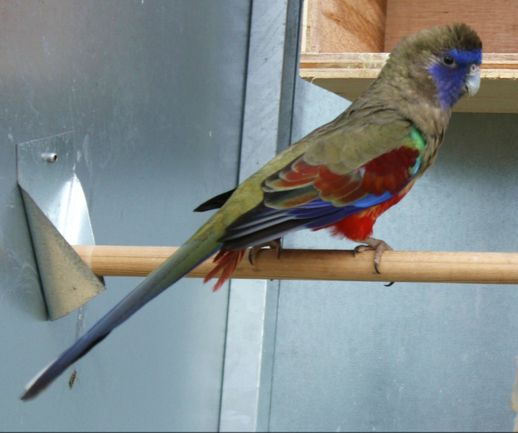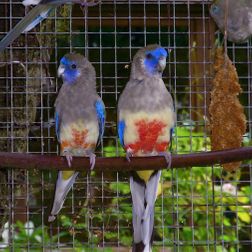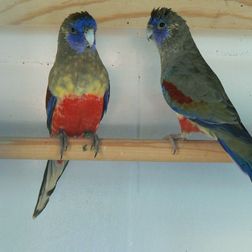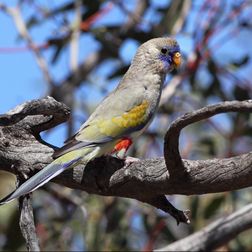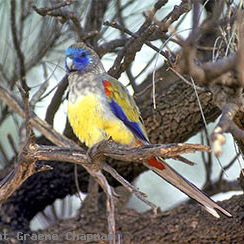Bluebonnet Parakeets
An overview over the articles about the Northiella genus
Under this tab you can read the following articles:
About Bluebonnets in general
In these articles you can read about one of the most entertaining and exciting parakeets in human care, the Australian Northiella genus.
The genus Bluebonnet Parakeets (Northiella) belonged years ago to the genus Red-rumped Parakeets (Psephotus). However, there are marked differences between the genus Bluebonnet and the genus of Red-rumped Parakeets, i.a. the Bluebonnets are somewhat larger and heavier birds, just as they have a different wing formula and have a significantly different - more pompous - and very conspicuous behaviour. In addition, there is no immediate visual dimorphism (i.e. visible difference) between the sexes, as is known in the genus Red-rumped Parakeets, cf. however below.
This genus has particularly attracted my attention, as it is brightly coloured in its own special way, to which is added its very lively, entertaining and often almost playful behaviour. The latter makes the Bluebonnet particularly attractive compared to many other Australian parakeets, which outside the breeding season can be quite sedentary and monotonous in their behaviour. The Bluebonnets are also extremely hardy birds that, like mainland birds, can withstand low temperatures, but not moisture and drafts. Its less good aspects include that the males are often very aggressive, and therefore they can only be kept in pairs alone in an aviary. The aggressive behaviour is probably the main reason why these birds have not gained even greater popularity in human care.
In the above mentioned articles you - among many other things - can read about:
- About the applicable biological classification for the genus Bluebonnet (Northiella) under Species Overview.
- About the nominate subspecies, Yellow-vented Bluebonnet, i.a. about the national program previously established in Germany to protect pure-species specimens in human care.
- About the most widespread subspecies in human care, the Red-vented Bluebonnet, which is the absolute most colourful of all the forms, and around which a great deal of breeding work is done to make them as "red" as possible.
- About the Pallid Bluebonnet, which is considered by some to be a variant of the nominate subspecies, but which is in fact a scientifically recognized subspecies.
- About the subspecies, Naretha Bluebonnet, which is a great rarity in human care, but certainly not in the wild, and which, until the colonization of Australia, has lived in vast desert-like areas without access to surface water.
These birds are under no circumstances suitable to be kept in cages, but only in aviaries in pairs alone. In a large aviary, its flying skills come into play, and you will only experience the positive aspects of its behaviour when the pair is kept alone in the aviary.
Australia is home to some of the world's most beautiful parrot species, including parakeets, so it has been very surprising to learn that the country's post office has issued relatively few stamps featuring Australian parrots. Unfortunately, these stamp issues do not include Bluebonnets, either under the Psephotus or Northiella genus names, so in this article we regrettably have to limit ourselves to illustrating these birds via photos.
Jorgen Petersen
Conceived/Updated: 05.12.2010 / 29.01.2024
IT IS NOT ALLOWED TO COPY PHOTOS OR TEXT FROM THIS SITE WITHOUT PRIOR WRITTEN ACCEPTANCE!

